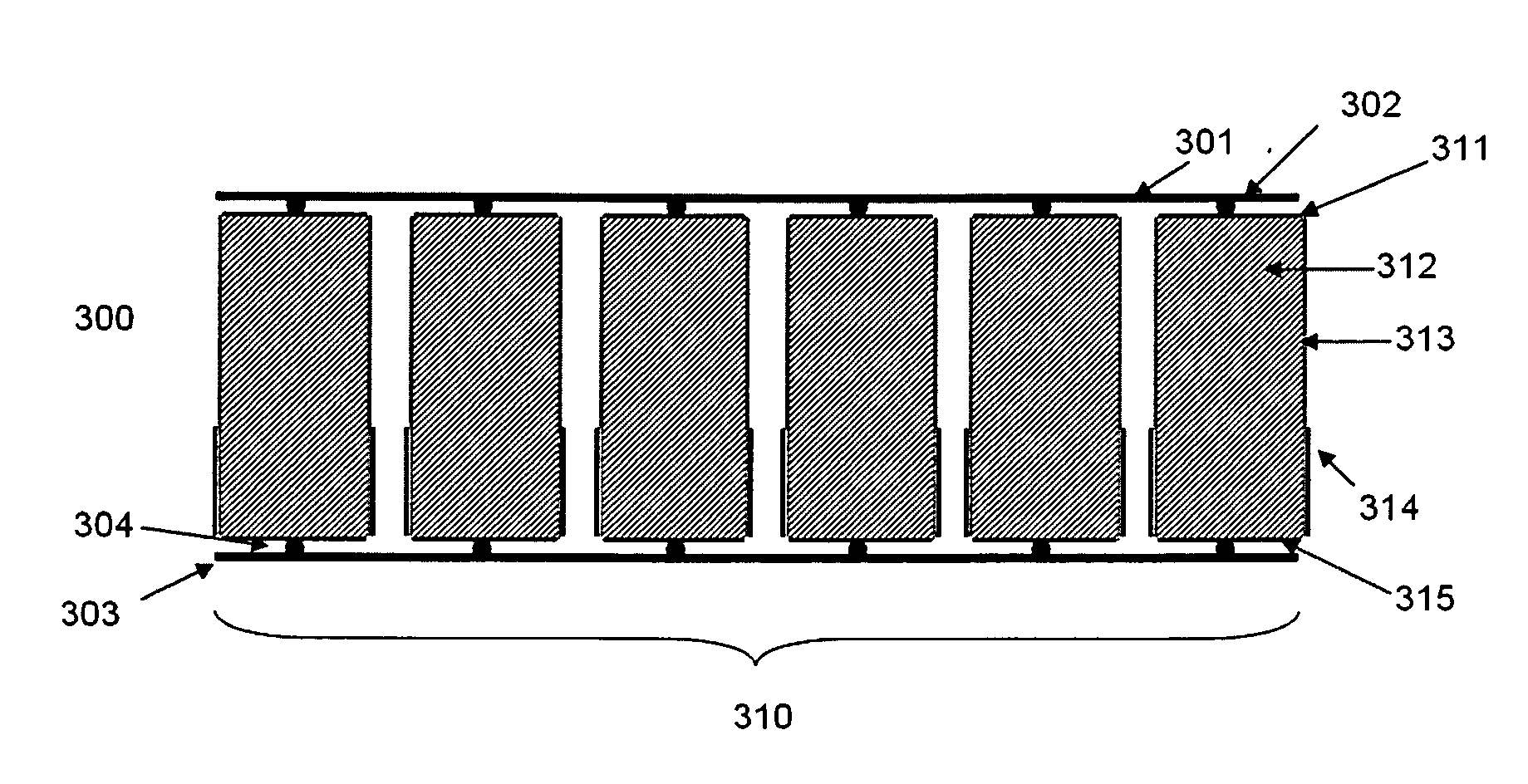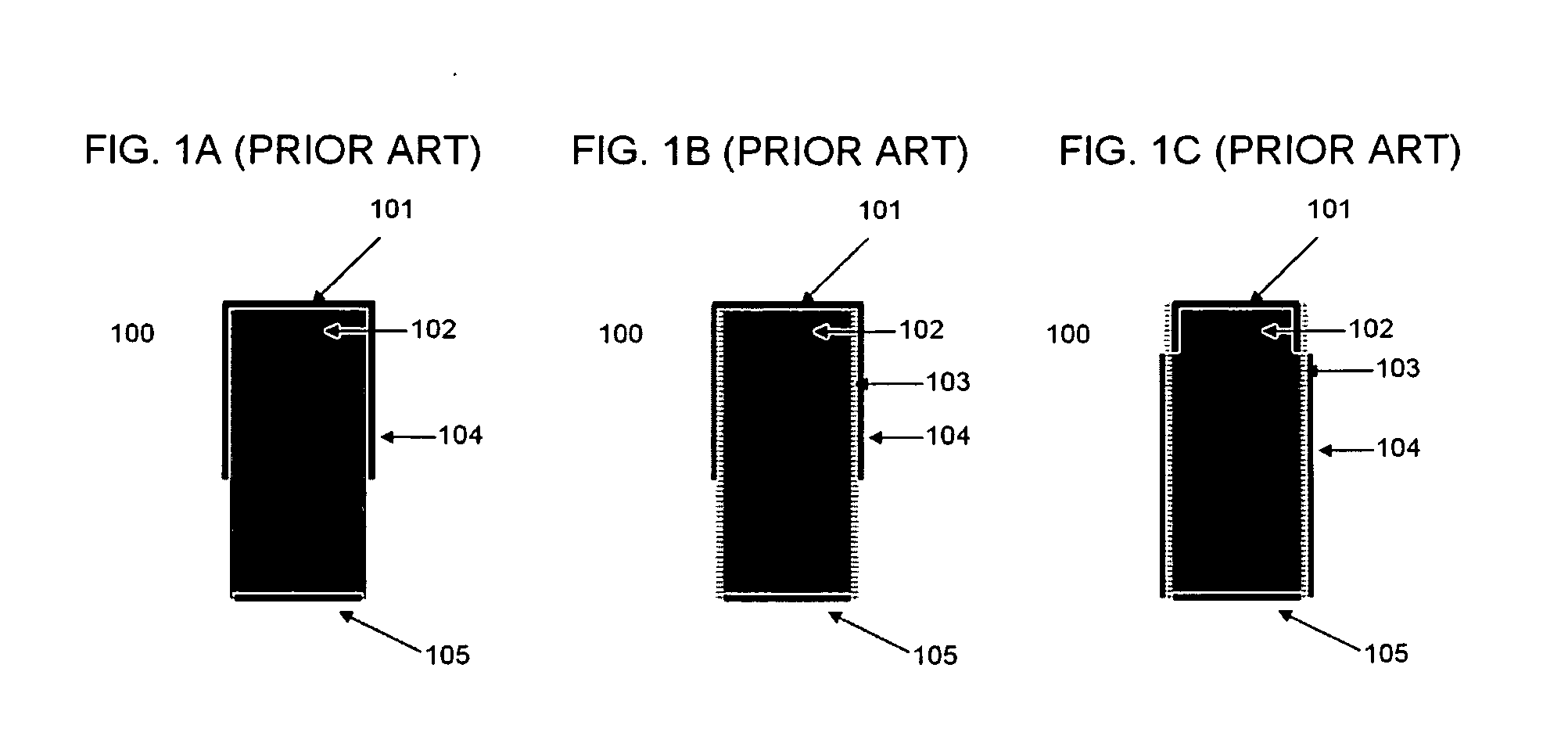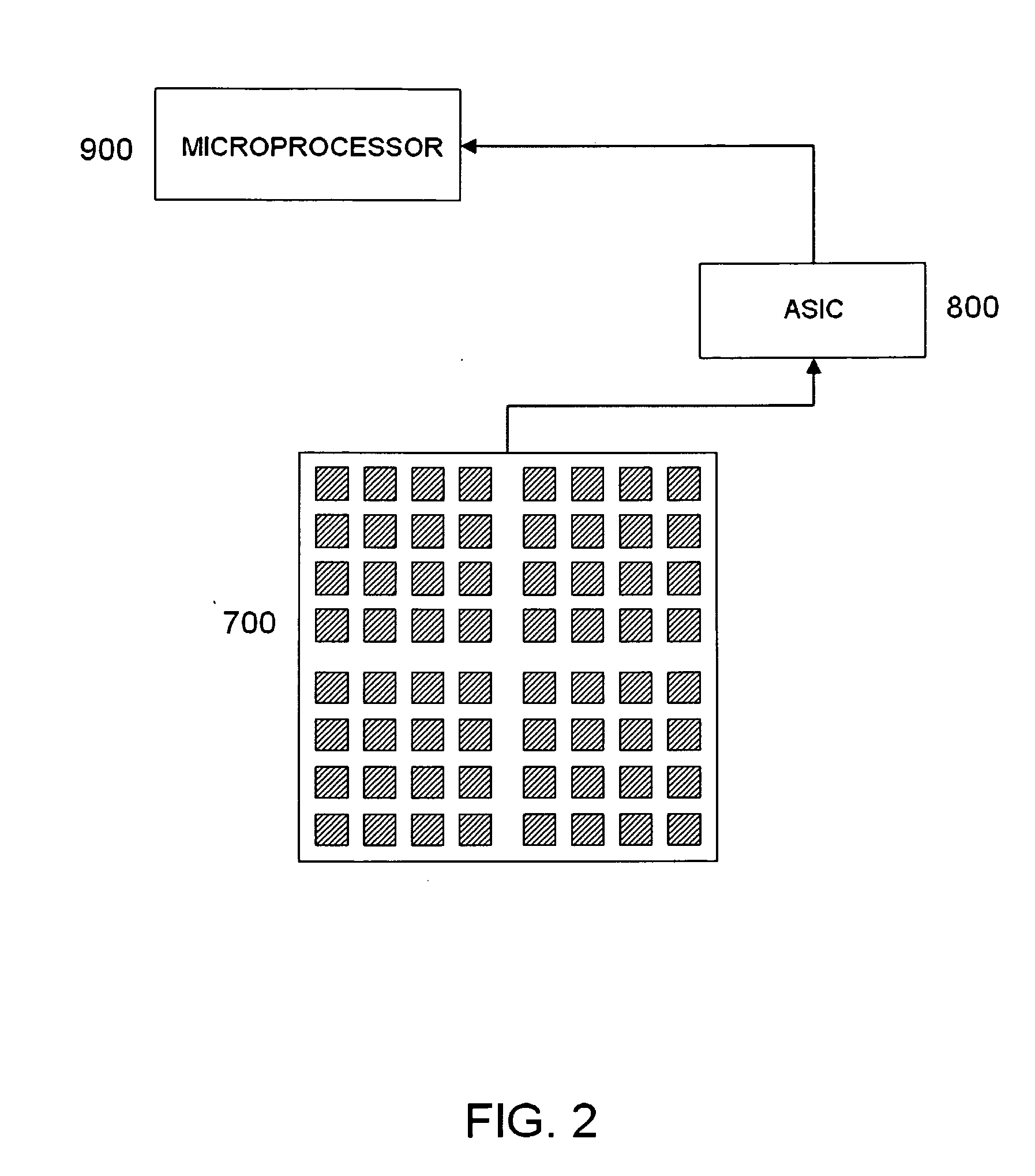Array of virtual frisch-grid detectors with common cathode and reduced length of shielding electrodes
a technology of shielding electrodes and virtual frisch-grid detectors, which is applied in the direction of x/gamma/cosmic radiation measurement, radiation control devices, instruments, etc., can solve the problems of reducing the spectral resolution of semiconductor detectors, affecting the amplitude of output signals, and affecting the effect of immobile holes, so as to improve the virtual shielding effect and reduce the effectiveness of shielding the anode
- Summary
- Abstract
- Description
- Claims
- Application Information
AI Technical Summary
Benefits of technology
Problems solved by technology
Method used
Image
Examples
example 1
[0063]To overcome the problem caused by electron trapping, the best practical approach is to use the cathode signal to correct the anode's signal loss due to electron trapping. In the design of virtual Frisch-grid detectors of prior art, the shield is extended up to the cathode, which, although enhances the shielding of the semiconductor, reduces the ability to measure cathode signals. Therefore, in the present invention we optimized the virtual Frisch-grid design for the individual CdZnTe bars and the CdZnTe array configuration.
[0064]The CdZnTe crystals were purchased from eV-Microelectronics, Inc. (373 Saxonburg Blvd., Saxonburg, Pa. 16056). The crystals were re-shaped into bar detectors with a geometric aspect ratio between approximately 2 and 3. Fabrication of the bar-shaped CZT detectors was conducted as described in Bolotnikov, et al. (Proc. SPIE, vol. 5540, 33-45, 2004, incorporated herein by reference in its entirety). The original crystals were hand polished and etched brie...
example 2
[0068]The Experiment presented in Example 1 was repeated to demonstrate reproducibility of the present invention. FIG. 6B is a graph representation that shows the reproducibility in the correlation between the amplitude of the signals, Aanode and Acathode, generated by monoenergetic gamma rays and read out from the anode and the cathode. A standard 137Cs radioactive source was used to observe the spectroscopic properties of the detectors. FIGS. 7C and 7D show two pulse-height spectra measured from a 137Cs source with a 15-mm long Frisch-grid detector before and after applying the interaction depth correction and rejecting the events interacting close to the anode. The data was evaluated by measuring the waveforms from preamplifiers and applying the pulse-shape analysis. The low energy tail seen in the original spectrum (see FIG. 7C) is substantially reduced without losing of photopeak counts by selecting the events with an Acathode / Aanode ratio greater than 0.005. As a result, the e...
PUM
 Login to View More
Login to View More Abstract
Description
Claims
Application Information
 Login to View More
Login to View More - R&D
- Intellectual Property
- Life Sciences
- Materials
- Tech Scout
- Unparalleled Data Quality
- Higher Quality Content
- 60% Fewer Hallucinations
Browse by: Latest US Patents, China's latest patents, Technical Efficacy Thesaurus, Application Domain, Technology Topic, Popular Technical Reports.
© 2025 PatSnap. All rights reserved.Legal|Privacy policy|Modern Slavery Act Transparency Statement|Sitemap|About US| Contact US: help@patsnap.com



